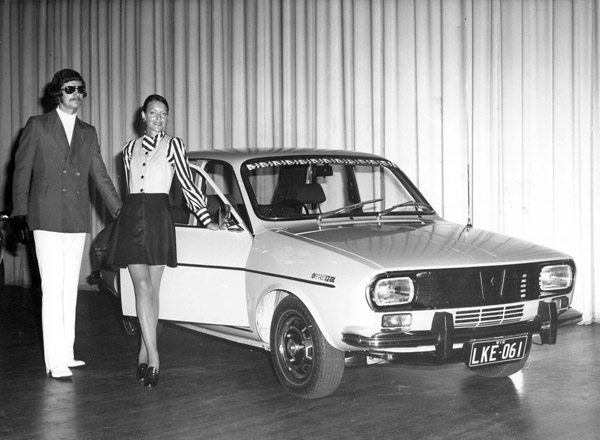
The original design concept for the R12 described it as a high-class, medium sized car for
the 1970s. The Renault R12 was a front-wheel drive vehicle powered by a 1289cc engine
which was built, over its model life in three body styles: four-door saloon, five-door estate
and a three-door panel van. The saloon and estate were available in two versions: TL and
L.
In the R12’s introductory year Renault was the third largest motor manufacturer in Europe.
The R12 was powered by a four-cylinder engine rated at 40 kW. This was a newer version
of the engine used to power the previous Renault 8/10, but with a capacity increase to
1289 cc. The engine was placed longitudinally ahead of the front wheels and this
positioning made it possible to use a simple design for the floor mounted gear lever.
Previous models had dashboard or steering column placement. The gearbox was a slightly
modified version of that fitted to the Renault R16. The handbrake lever was positioned
under the dashboard. Compression ratio of the engine was 8.5:1 and it had a Solex 32
EISA carburettor with a manual choke.
The R12 was designed to be a safe car for both its driver and passengers. Although its
body was of unitary construction, it did have an integral chassis of great strength with
frontal impact absorption. Two parallel side members at the front were actually part of the
body yet they supported the engine as well as the front suspension. Similar members were
built in at the rear to support the fuel tank and the floor of the boot. On either side of the
floor two more very solid outer side members ran beneath the door sills, and ensured
protection against a side impact.
When first released the R12 received considerable praise from the European press, noting
its spaciousness, comfortable interior, styling, performance and low fuel consumption.
The R12 was Wheels magazine’s ‘Car of the Year’ for 1970. It was assembled in
Melbourne from CKD kits with some components sourced locally. In 1976 the 1289 cc
engine was replaced by a 1397 cc unit to the same basic design. In 1978 it was
relaunched as the Virage, identical to the R12 but with twin round headlights. Australian
assembly ceased in 1980. By this time total world production had reached 2.5 million
vehicles.